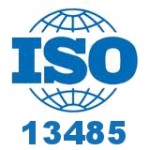Imagine this: you’ve just completed biocompatibility testing for your device, and the data looks great. You assemble the data, add it to your submission packet and send it off to the FDA – woo hoo! All that’s left to do now is to wait for FDA clearance, and you’re off to the revenue races.
Then you get a letter from the FDA stating that your data is fraudulent and will not be accepted.
But how can this be? You contracted with a reputable lab – or so you thought – and now your submission is on hold until you repeat all that biocompatibility testing.
And that’s going to be expensive.
FDA Cracks Down on Fake Data
Fraudulent data is becoming more common by the submission. So much so that the FDA published a press release titled “Fraudulent and Unreliable Laboratory Testing Data in Pre Market Submissions: FDA Reminds Medical Device Manufacturers to Scrutinize Third-Party Generated Data.” It seems that the agency is using artificial intelligence to find unusual patterns in submitted data, pulling decades worth of fraudulent data out of the woodwork with ease.
These so-called “dry labs” are essentially taking old data, copying it, putting it into reports and sending it back to unsuspecting clients who then innocently submit to the FDA. I know of four completely unrelated companies who unknowingly used the same testing lab, submitting similar data to the FDA – all pulled from 510(k) submissions approved back in the 1990s.
The FDA’s message is clear: this can happen, and manufacturers need to be vigilant. They offer some suggestions on how to vet labs, but ultimately, the onus is on the you as the study sponsor to ensure the data you submit is real and applicable to their device.
The Rise of ASCA and How it Benefits You
ASCA stands for Accreditation Scheme for Conformity Assessment. Traditionally, the FDA has been hesitant to even communicate with testing labs, holding the study sponsor solely accountable. But they’ve realized the importance of ensuring labs provide sponsors with accurate data, so they’ve developed ASCA.
It’s a concept somewhat similar to that of notified bodies in the EU in that a select few organizations are accredited by government bodies to verify that quality systems meet essential requirements. Once a lab meets these basic requirements, they can apply for ASCA accreditation, with the accreditation applying to both the specific tests and the testing facility. This process is rigorous and ensures the lab follows specific protocols for the tests they’re accredited for.
The beauty of ASCA is that the FDA trusts data from ASCA-accredited labs. When they see ASCA certification with a submission, they know the data was generated following FDA-approved processes. This eliminates a layer of review for them, allowing them to focus on non-ASCA-certified data or tests.
ASCA, ISO and the CLAP: What You Need to Know
ASCA isn’t tied to ISO 13485 or 17025. It focuses solely on ensuring the lab has robust quality systems per FDA requirements, regardless of the chosen structure. But let’s say you choose a lab based on their ASCA accreditation. This only applies to the specific test(s) they’re accredited for, and currently, there are only seven biocompatibility tests included in the ASCA scheme. There are only five labs in the entire world that are accredited for five of the biocompatibility tests, and only one accredited for all seven. FDA would love to see more labs become ASCA certified, and that’s where CLAP comes in – the Chemicals List for Analytical Performance.
This list was introduced shortly after the fraudulent data press release, and it’s a list of chemicals that you might see when you do extractable and leachables testing on your device. CLAP is not regulation, it’s not tied to ASCA in any way, and both industry and the FDA are still grappling with the best way to use this information. But if nothing else, if you don’t see results for any of these chemicals in your testing, then your methods may not be sensitive enough, and you’ll need to start again, because the FDA has its own tool to evaluate the effectiveness of the chemical characterization that was conducted.
How to Choose a Biocompatibility Testing Lab
Biocompatibility testing is a HUGE investment that can cost you the equivalent of a nice starter home in a desirable location, so it’s well worth doing your due diligence before signing on the dotted line. But what to look for?
If possible, visit the testing lab to see for yourself how many staff members they have. Check out the types of testing platforms they have, and ask to see the animal facilities, if they have them.
Verify that the lab has ISO 17025 and ASCA accreditation, and what tests they are accredited for. Don’t trust the Interweb – anyone can build a slick website these days, and if they’re sending you fraudulent data, then what’s stopping them from posting a fraudulent certificate? Ask the lab for a certificate and compare it to the FDA’s published list.
Check that the lab has experience working with devices like yours, and with materials like yours. And don’t just take their word for it – ask to see the evidence to support that claim.
Don’t be penny wise and pound foolish. Choose your testing lab carefully and take advantage of the pre-submission process to get FDA buy-in for your testing plan. Biocompatibility testing take months to complete, and the last thing you want to do is repeat it all, doubling your expense and extending your timeline.
Related Content
Don’t Ignore Your FDA Submission Strategy
MedTech Intelligence Content Partner

This blog post was previously posted by leanRAQA. The author is employed by or otherwise directly associated with this Partner.







